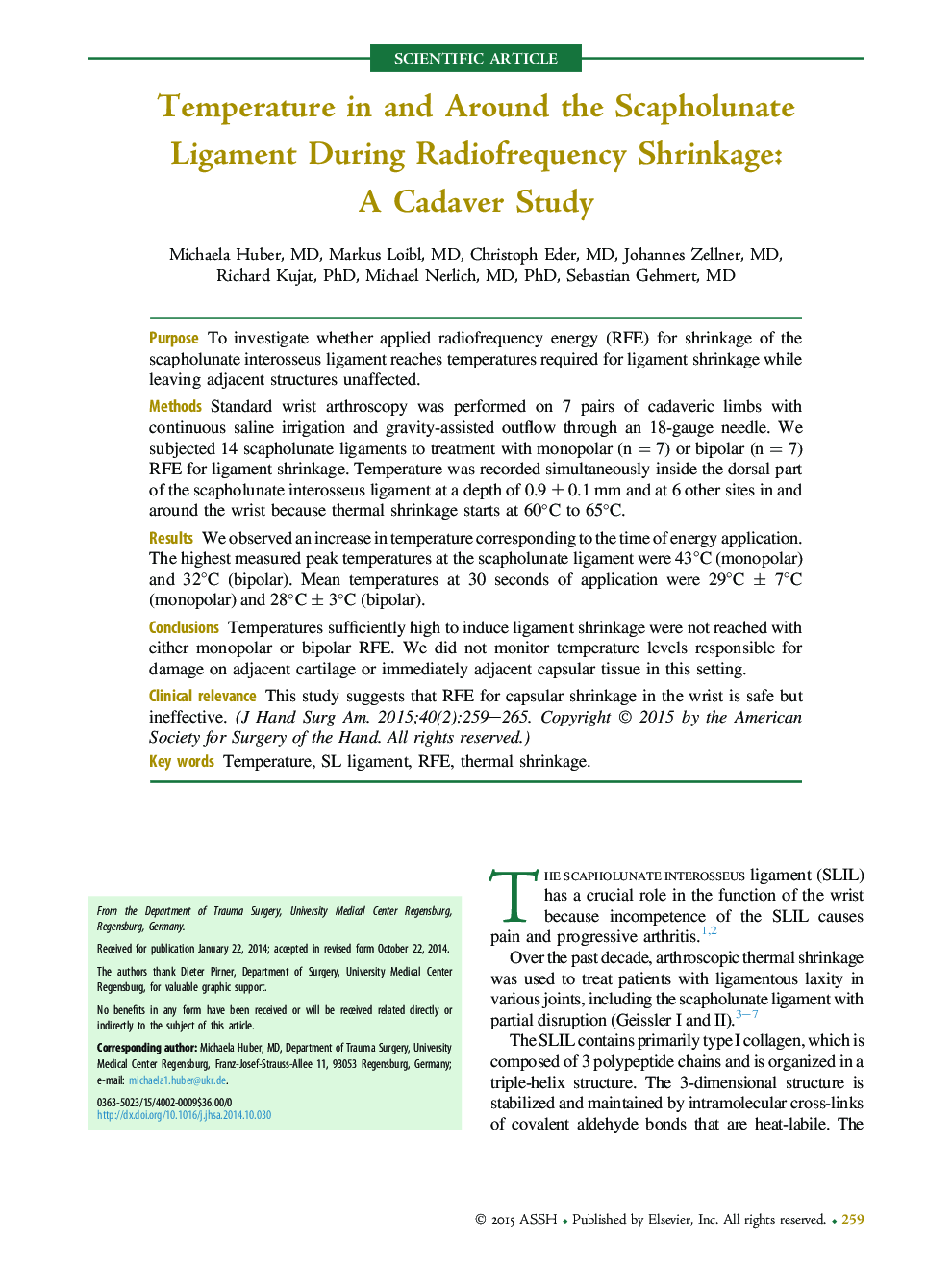| کد مقاله | کد نشریه | سال انتشار | مقاله انگلیسی | نسخه تمام متن |
|---|---|---|---|---|
| 4067242 | 1604360 | 2015 | 7 صفحه PDF | دانلود رایگان |

PurposeTo investigate whether applied radiofrequency energy (RFE) for shrinkage of the scapholunate interosseus ligament reaches temperatures required for ligament shrinkage while leaving adjacent structures unaffected.MethodsStandard wrist arthroscopy was performed on 7 pairs of cadaveric limbs with continuous saline irrigation and gravity-assisted outflow through an 18-gauge needle. We subjected 14 scapholunate ligaments to treatment with monopolar (n = 7) or bipolar (n = 7) RFE for ligament shrinkage. Temperature was recorded simultaneously inside the dorsal part of the scapholunate interosseus ligament at a depth of 0.9 ± 0.1 mm and at 6 other sites in and around the wrist because thermal shrinkage starts at 60°C to 65°C.ResultsWe observed an increase in temperature corresponding to the time of energy application. The highest measured peak temperatures at the scapholunate ligament were 43°C (monopolar) and 32°C (bipolar). Mean temperatures at 30 seconds of application were 29°C ± 7°C (monopolar) and 28°C ± 3°C (bipolar).ConclusionsTemperatures sufficiently high to induce ligament shrinkage were not reached with either monopolar or bipolar RFE. We did not monitor temperature levels responsible for damage on adjacent cartilage or immediately adjacent capsular tissue in this setting.Clinical relevanceThis study suggests that RFE for capsular shrinkage in the wrist is safe but ineffective.
Journal: The Journal of Hand Surgery - Volume 40, Issue 2, February 2015, Pages 259–265